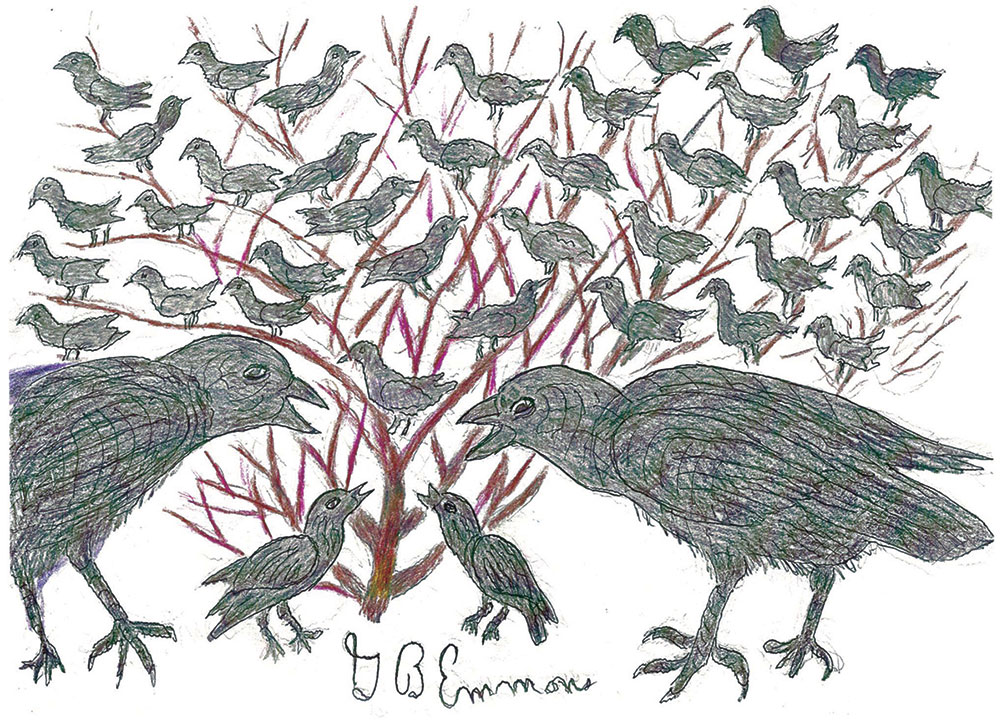When the curtain of darkness begins to fall for the last act of afternoon bird watching upon the coastal stage of Little Bay in Fairhaven, from the front-row seat of our seaside terrace, my wife Jan and I have witnessed a string of crows moving inland to roost for the night.
Crows know that in the fading light of early autumn it is almost time to congregate in large numbers for safety from night owls and company for peace of mind while moving for warmth into the heated zones of suburban neighborhoods. The gathering of crows is classified as a “murder” in avian nomenclature, as illustrated. It may begin with a few birds, but as nights get colder and longer, the clamoring assembly may soon number a hundred or so until migrating into a large city, several thousand to make a lasting impression of the birdwatching season.
The crow is very social, congenial, and communal as a member of the corvid scientific collection of very intelligent crows, jays, magpies, and especially the Edgar Allan Poe raven. Studies have shown that crows can count, solve puzzles, learn symbols, recognize people, and retain information. Some crows, if not all, are capable of producing unusual, tuneful, or pleasing sounds with superior vocal aptitude. A few have a varied assortment of sounds like imitations of a child crying, a hen squawking, or a rooster crowing. Many similar sounds are uttered by the male in courtship while talking to the female in flight as they both do acrobatics and somersaults. Henry Ward Beecher once remarked that even if men wore feathers and wings, a very few of them would be clever enough to perform like a crow.
The crow has unfortunately earned a poor reputation among humans as a thief and robber, stealing eggs, young chickens, and corn, and taking baby songbirds from the nest. And yet, if it sees a hawk or owl about to do the same, it calls together more of its kind to dive loudly from above and, catching up with it, drive it away from the area.
Each crow is a different character and subsequently is well known in children’s literature as well as in Aesop’s fables. And in Native American legends it ranks with the coyote, fox, and hare in tribal tales of supernatural powers in the natural creation of Mother Earth for mankind. It is portrayed as crafty and scheming, like the character of many other personalities, acting on behalf of its own importance in the worldly scheme of a pecking order. Today the crow still rises up early in the morning to pursue its own interests.
Naturalists believe that there are more crows in this country than there were when the pilgrims landed. They take care of their young and defend them valiantly against their enemies. Even though they grow up to be a serious menace to crops and poultry, to justify reducing their numbers, we are not likely to take advantage of any weakness so that many are killed. Henry David Thoreau said that this bird saw the white man come and withdraw the Indian population, but crows did not pass away. The natural sound of its untamed calling will always be heard to remind us that our civilization had an aboriginal beginning that still remains among us to this very day for our awareness and appreciation.
By George B. Emmons
